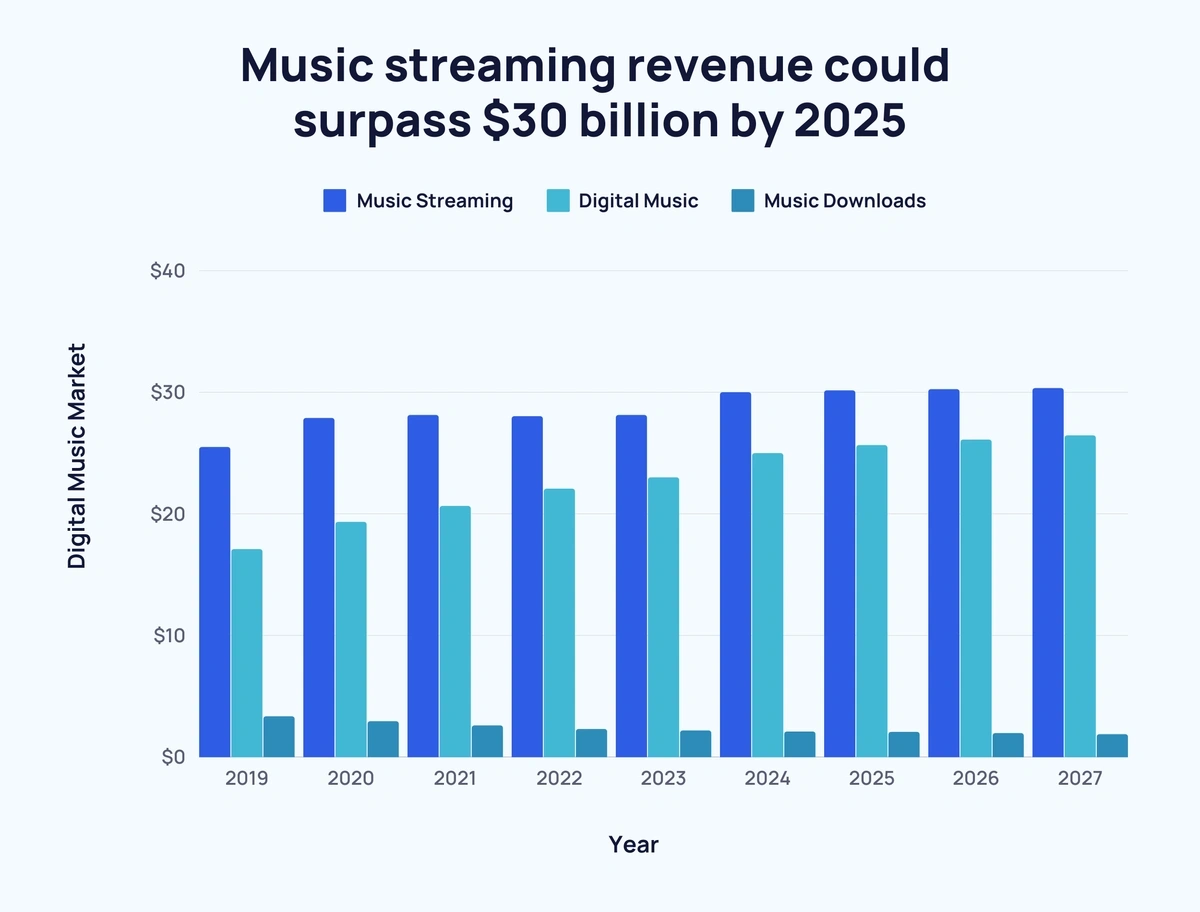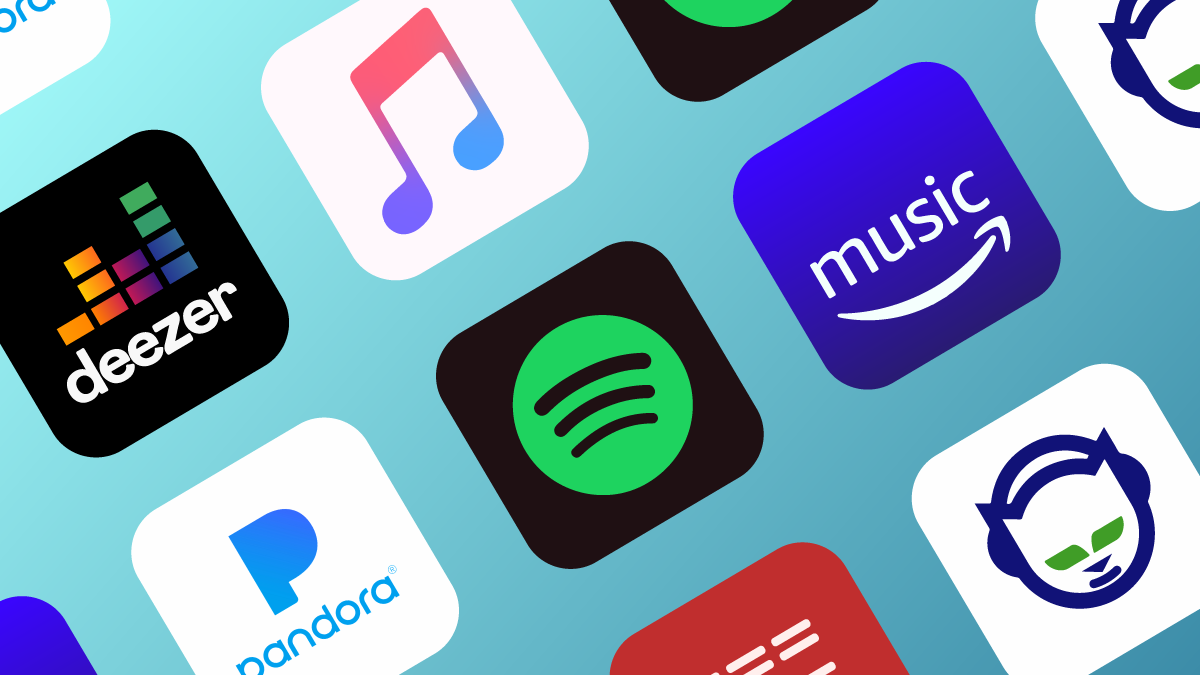5 Popular Music Streaming Trends Shaping The Industry!
Unlock the Beat - Dive into music streaming trends Shaping 2024! From rising indie hits to top-chart busters, discover the pulse of today's music scene.
Author:Emily SanchezReviewer:Elisa MuellerAug 17, 2024481 Shares240.5K Views

The biggest change in the industry over the past 10 years has been the widespread adoption of streaming, and this change is still happening. Streaming services are still searching for methods to increase their customer base, improve their offering, boost sales, and create a long-term, viable business plan. Caught in the midst of that is the music industry.
Streaming has already had a significant impact on how we listen to, share, and interact with music, and those changes might not even be complete. For this reason, we have chosen to examine the mechanisms underlying music streaming and provide popular music streaming trends.
How Does Music Streaming Work?
The basic principle of music streaming is this: a streaming service sends tiny bits of data to a streamer, enabling the user to get pre-buffered music that has been pre-buffered within moments or minutes before playing a song.
Streaming technology allows for continuous listening without storing music on the user's device, provided they have a strong internet connection. Some key trends are described below:
1. Maturation Of The Market
The majority of the current growth in streaming can be attributed to new customers who are abandoning earlier generations of music distribution methods, such as physical CD sales or digital downloads. The expansion will inevitably slow down after that transition is finished; in fact, some of the more established areas have already reached the maximum rate of streaming adoption.
Consider the Scandinavian markets as an example. According to IFPI data, streaming accounts for over 90% of digital music sales in Finland, Sweden, Norway, Denmark, and Iceland, or roughly 80–85% of all recording income.
2. Streaming And The Cost Of Music
Most streaming providers are currently having difficulty establishing a viable business plan. It's reasonable to assume that not onlySpotify but all of the main western services have not yet turned a profit; Spotify, unlike Apple Music or Amazon Music, lacks a large corporation to absorb its losses.
3. The Global Expansion Of Streaming
More advanced streaming markets are approaching the maximum adoption rate. The greatest rate of streaming adoption is not 100% of the population; rather, it is the pace at which new users stop joining (around 50% penetration rate, based on statistics from mature streaming marketplaces).
While there isn't much room for "new blood" in the U.S. and Europe, India has a 6.1% streaming penetration rate, which indicates that the streaming service hasn't yet reached a large enough audience.
According to MIDiA Research, as the global streaming industry expands over time, key economies that are a little bit late to the party, like Germany and Japan, will join emerging markets, like Brazil, Mexico, China, and India.
4. Smart-Speakers And Voice Controlled Devices
The estimated number of streaming users for the same year in the United States is 167,7 million, or 66,3 million households, will use smart speakers. One of the biggest subjects in the music industry at the moment is smart speakers, which promise to change how people consume music.
Studies have already demonstrated that smart speakers tend to increase music consumption because users notice that they are listening to more music, having longer listening sessions, and having access to a wider range of musicians.
Higher music consumption is associated with higher demand for streaming services. According to a survey by NPR and Edison, 28% of smart speaker owners said that purchasing a device motivated them to sign up for a streaming subscription.
5. From Music To Audio, Streaming Services To Take On Radio
Since we live in an attention economy, streaming services must compete with other media for consumers' attention. When it comes to audio material in general, radio is streaming's largest rival. Despite its reputation as an antiquated medium, radio continues to have significant influence in certain places.
Consider the United States, where radio reaches 92% of the population each week and is the primary medium for music consumption. It is also the most powerful media in the country. In this way, the streaming business has a ton of opportunities thanks to radio audiences. But winning over a radio listener is a difficult assignment.
A Complete Classification Of Music Streaming Services
The main offering in the streaming business is unrestricted, seamless access to the entire catalog of music. The fact that 99 percent of customers won't ever need to search outside of their preferred streaming provider is important to note, even though none of the streaming catalogues are truly comprehensive.
Let's categorize all the various streaming brand types available on the market in order to provide a comprehensive view.
1. Spotify As The Pioneer Brand
Since Spotify was the first product in the category, it gained recognition as a reference brand. For example, if you live in the U.S. or Europe, the words "music streaming" and "web search" likely conjure up images of Spotify, just as they do of Google.
However, Spotify hasn't quite become synonymous with the category like Google did. Just this feature gave Spotify a significant competitive edge in terms of branding.
While NetEase Cloud and Tencent Music have long since surpassed Spotify in terms of monthly active users, none of its rivals have been able to overtake it in terms of paying subscribers.
2. Ecosystem Brands
Streaming platforms that are part of a larger ecosystem of goods and services make up the first group. That includes all of the main streaming providers available internationally.
Spotify can be directly challenged by Apple Music, Google Play Music, and Amazon Music since they all provide streaming services that are included in larger product lines.
Of course, there are more factors as well, such as brand image associated with the bitten apple emblem and internal financial and talent capital.
But consider the marketing impact if your streaming service was pre-installed on every iPhone ever made, if every Amazon Prime membership included a limited-edition copy of Amazon Music, or if you could exploit the user base of Google Home to promote premium memberships.
Through these synergies, Apple, Google, and Amazon can directly compete with Spotify without overly separating their offerings.
3. Local Brands
Within the limits of the local market, local companies have emerged as a viable substitute for Spotify, making up the second group. Though there are TME streaming services available all over the world, Chinese TME streaming services stand out as the most popular, with 600 million users.
The list might go on: African BoomPlay Music, Korean Melon, Indian Gaana, JioSaavn Music, Russian Yandex Music, Zvuk, and African Anghami in the Middle East and North Africa.
The bulk of markets outside of the western world have their own streaming landscapes, built in the absence of global giants, whereas Spotify and the ecosystem brands dominate Europe and the Americas.
4. Niche Brands
Differentiating the offering and targeting a specific market is the third strategy for defeating Spotify's edge. The main feature of the majority of streaming services is unrestricted access to the whole global music catalog.
The idea is that you can locate any song you can think of among Spotify's 40+ million tracks, even if it isn't exactly full. But there is room for improvement in the one-size-fits-all strategy of global streaming services, which is where specialty streaming services come in.
The concept behind niche streaming is that you may provide a better listening experience (including discovery, suggestion, and other features) within a narrow niche by selecting a certain client segment, typically lovers of a particular music, and developing a service specifically for them.
5. Semi-music Streaming Services
Not to be overlooked are the digital service providers that, although they are utilized for music streaming on demand, don't really meet the criteria of a streaming service.
The most well-known instances of these kinds of companies are the established players in the industry, such as YouTube, Bandcamp, SoundCloud, Pandora, and others, who were around long before Spotify.
Using YouTube as an example, 47% of all music consumed worldwide is accessed through the platform, despite its primary function as a medium for sharing videos.
TikTok, which was first developed for the purpose of sharing brief videos, has evolved into both a global hit-influencing platform and a tool for discovering new music.
Active users who utilize the platform as a source of music are semi-streaming services' most valuable resource. As such, they can take advantage of this audience and attempt to turn it into paying subscribers.
FAQ's About Music Streaming Trends
Is Streaming Music The Future?
By 2028, it is anticipated that the music streaming and music artist platform markets would have grown to a projected value of $35.10 billion. Whether you like them or not, music streaming services are here to stay.
Is The Music Streaming Industry Attractive?
From 2019 to 2024, the music streaming market is projected to increase at a compound annual growth rate of 15.4% (MarketLine, 2020). The industry of music streaming is quite appealing because of its modest level of competition.
What Type Of Music Is In Demand?
The top streaming genres for 2023 have been identified, along with a few surprising findings, according to Luminate, a data affiliate of Billboard. The top four categories on the industry list are R&B/Hip-Hop, Pop, Rock, and Latin; country music comes in at a respectable fifth.
Conclusion
The popular music streaming trends in 2024 reflect a dynamic fusion of technology, culture, and user preferences. As streaming platforms refine their algorithms and user interfaces, listeners are enjoying unprecedented access to diverse musical genres and artists from around the globe.
From the resurgence of vinyl records to the rise of personalized playlists and immersive audio experiences, the future of music streaming promises to be both innovative and inclusive.

Emily Sanchez
Author
Emily Sanchez, a Fashion Journalist who graduated from New York University, brings over a decade of experience to her writing. Her articles delve into fashion trends, celebrity culture, and the fascinating world of numerology.
Emily's unique perspective and deep industry knowledge make her a trusted voice in fashion journalism.
Outside of her work, she enjoys photography, attending live music events, and practicing yoga for relaxation.

Elisa Mueller
Reviewer
Elisa Mueller, a Kansas City native, grew up surrounded by the wonders of books and movies, inspired by her parents' passion for education and film.
She earned bachelor's degrees in English and Journalism from the University of Kansas before moving to New York City, where she spent a decade at Entertainment Weekly, visiting film sets worldwide.
With over 8 years in the entertainment industry, Elisa is a seasoned journalist and media analyst, holding a degree in Journalism from NYU. Her insightful critiques have been featured in prestigious publications, cementing her reputation for accuracy and depth.
Outside of work, she enjoys attending film festivals, painting, writing fiction, and studying numerology.
Latest Articles
Popular Articles

